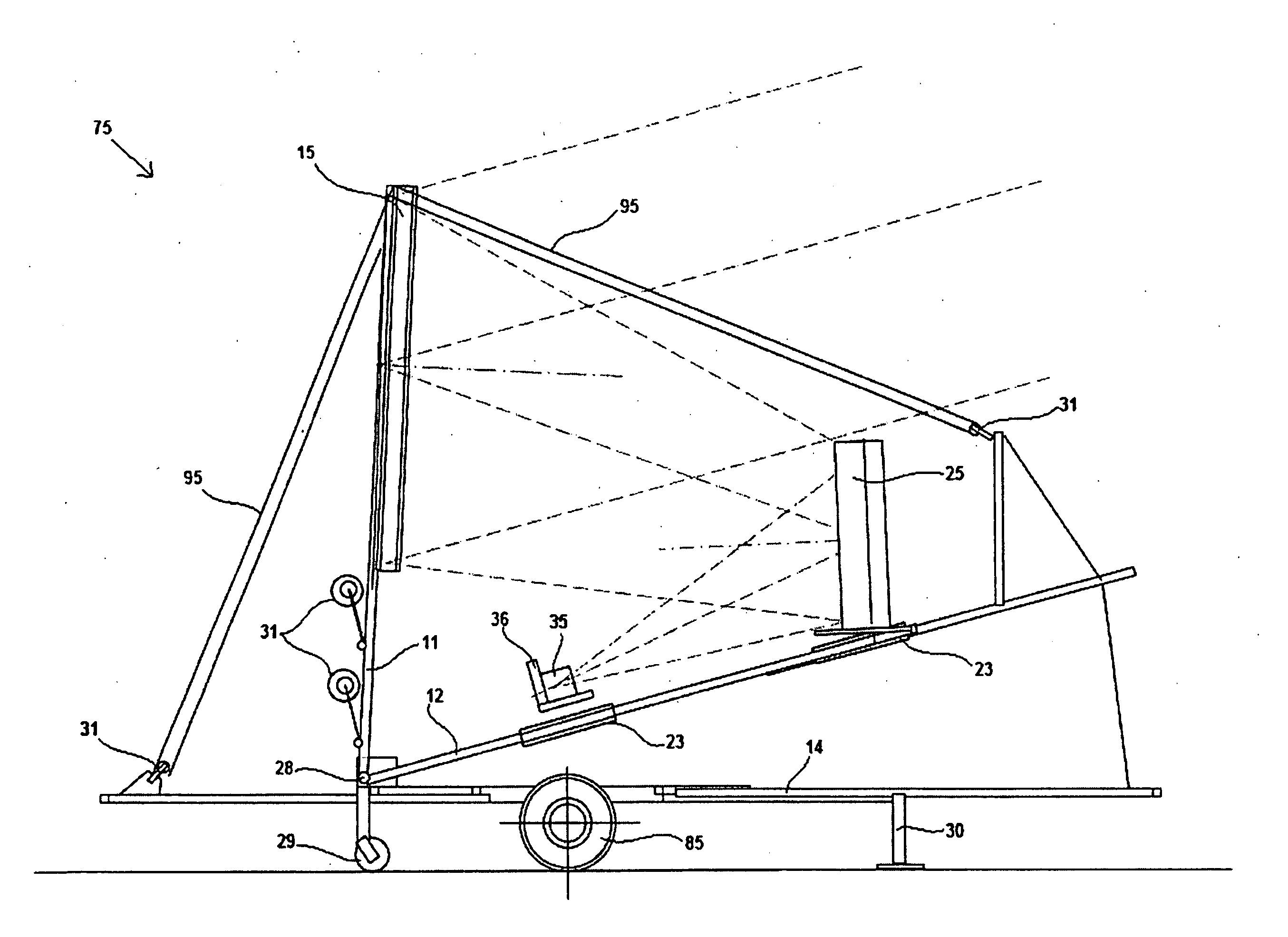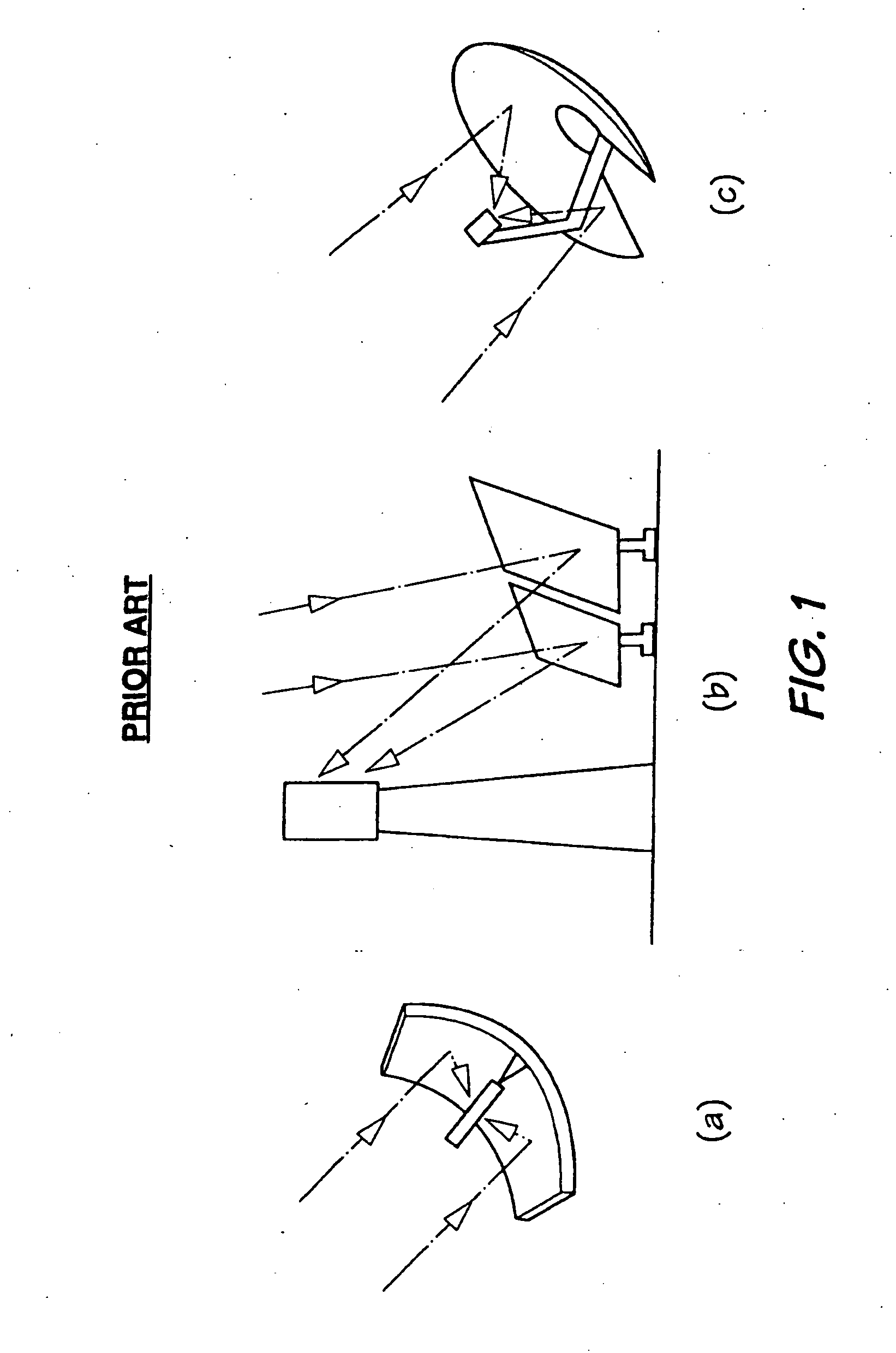Two-Stage Solar Concentrating System
a solar concentrator and solar energy technology, applied in the field of solar concentrators, can solve the problems of heavy burden on traditional sources of energy, adversely affecting the bottom line of many small and medium-sized energy-intensive industries, and non-renewable fossil-based fuels, etc., and achieve the effect of preventing gravitational sag and effectively using
- Summary
- Abstract
- Description
- Claims
- Application Information
AI Technical Summary
Benefits of technology
Problems solved by technology
Method used
Image
Examples
Embodiment Construction
[0042]FIG. 1 shows three primary types of reflective solar concentrating systems based on the type of focusing they produce, viz., (a) parabolic trough concentrators that produce line focus; (b) central receiver-type concentrators that concentrate sunlight onto distant and centralized towers; and, (c) parabolic dish concentrators that produce a point focus.
[0043]The underlying principle of a two-stage solar concentrating system is illustrated in FIG. 2. A two-stage solar concentrating system comprises two single-curved mirrors (1, 2) curved in a parabolic shape so that the rays of the sun are reflected and concentrated to a point focus at a location (3). The two mirrors have two different focal lengths. The primary mirror (1) has a long focal length and the secondary mirror (2) has a short focal length. The rays of the sun are concentrated to a line focus by the primary mirror (1). The secondary mirror (2), with its plane of symmetry substantially orthogonal to that of the primary m...
PUM
 Login to View More
Login to View More Abstract
Description
Claims
Application Information
 Login to View More
Login to View More - R&D
- Intellectual Property
- Life Sciences
- Materials
- Tech Scout
- Unparalleled Data Quality
- Higher Quality Content
- 60% Fewer Hallucinations
Browse by: Latest US Patents, China's latest patents, Technical Efficacy Thesaurus, Application Domain, Technology Topic, Popular Technical Reports.
© 2025 PatSnap. All rights reserved.Legal|Privacy policy|Modern Slavery Act Transparency Statement|Sitemap|About US| Contact US: help@patsnap.com



